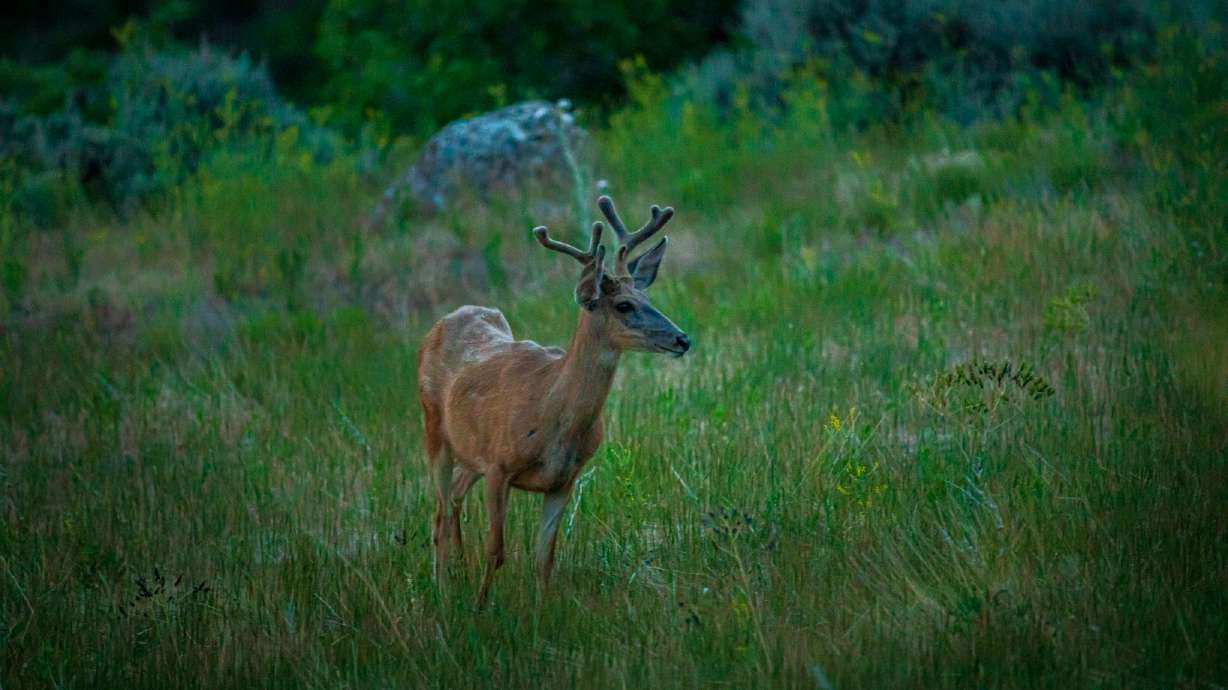Estimated read time: 3-4 minutes
This archived news story is available only for your personal, non-commercial use. Information in the story may be outdated or superseded by additional information. Reading or replaying the story in its archived form does not constitute a republication of the story.
SALT LAKE CITY — The Utah Wildlife Board on Thursday finalized a plan that will decrease the number of deer hunting permits in Utah this year even more than what was originally proposed by state wildlife biologists last month.
Cuts to the general-season buck deer hunt were the biggest change approved during the meeting. The board approved 74,025 total permits issued by the state, which is a reduction of 5,650 permits from 2020. Seventeen of the 29 deer units in the state will have reductions in permits from last year.
The board also approved 45 management buck ("cactus") deer permits, which is 19 fewer than last year, and 1,070 limited-entry deer permits — 112 fewer than 2020. Antlerless deer permits were also cut from 1,175 in 2020 to 935 in 2021.
Utah Division of Wildlife biologists originally proposed 4,900 fewer general-season buck permits for the year. They cited a drop in the deer population likely tied to ongoing drought conditions. In their December 2020 deer population report, they estimated there were an estimated 3,300 fewer deer from 2019 and more than 60,000 fewer than 2018 estimates.
In the end, the board agreed with larger cuts to the permit totals. Covey Jones, the DWR big game coordinator, said Thursday that it was difficult to overlook the impacts that the statewide drought has had on deer populations.
"In Utah, we have the longest range-trend study in the Western U.S., and we've seen that having suitable habitat is crucial for maintaining or growing wildlife populations," he said in a statement after the meeting ended. "And drought conditions can really negatively impact that habitat, which in turn affects our wildlife species."
Despite fewer permits overall, the board did approve some needed antlerless hunts to address urban deer issues in places like Price and Oak City. Jones explained that those new hunts were created to "reduce depredation on private lands" in addition to handling urban deer issues and decreasing the odds of chronic wasting disease spreading.
Other big game hunting changes
The board also approved increases in other hunts, where survival rates and populations aren't as dire as deer. The number of general any bull elk permits was set at 17,500, which is 2,500 more than last year, while the number of antlerless elk permits rose by 225 to 8,285 permits in 2021 and limited-entry bull elk permits were increased slightly from 2,948 to 2,990.
General spike bull elk and youth any bull elk permits were unchanged. The division will offer 15,000 spike bull elk permits and 500 youth any bull elk permits.
The number of buck pronghorn permits also rose, from 1,147 in 2020 to 1,173 in 2021. The number of doe pronghorn permits, on the other hand, was cut from 525 to 404.
Other big game permit changes:
- Desert bighorn sheep permits were set at 81 (three more than 2020)
- Rocky Mountain bighorn sheep permits were set at 67 (two more than 2020)
- Rocky Mountain bighorn sheep ewe permits were set at 10 (same as 2020)
- Bison permits were set at 146 (49 more than 2020)
- Bull moose permits were set 112 (five more than 2020)
- Antlerless moose permits were set at 15 (16 fewer than 2020)
- Mountain goat permits were set at 120 (two fewer than 2020)
Aside from permits, the board approved a plan for the DWR to provide information about the best ways to hunt bison this year and for the agency to provide a mandatory ethics and informational orientation for bison hunters beginning in 2022.
The motion was brought forward by board member Karl Hirst, who explained that hunting bison can be tricky if a hunter aims for the wrong locations on the animal's body.
"They die really easy if you hit them good; they don't if you hit them bad," he said. "I just think regardless of weapon, we need an orientation on where to shoot these things. Most of the shots go high and that is terrible."
After some debate on the need for a course, they settled on a plan to push the course for bison hunters in 2022 and provide informational material for this year.
All of the big game hunting seasons begin later this year.









